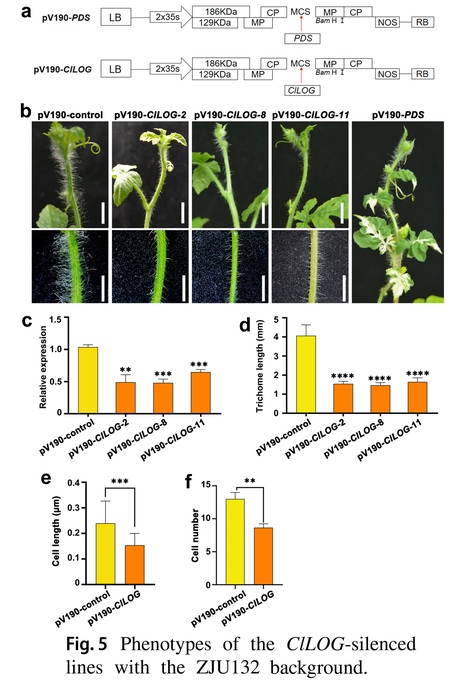Authors: Yuyuan Ma, Yu Wang, Zhiqin Zhou, Runqin Zhang, Yiru Xie, Yihan Zhang, Yongming Bo, Xiaolong Lyu, Jinghua Yang, Mingfang Zhang and Zhongyuan Hu.
Theoretical and Applied Genetics (2024)
Key message: The ClLOG gene encoding a cytokinin riboside 5ʹ-monophosphate phosphoribohydrolase determines trichome length in watermelon, which is associated with its promoter variations.
Abstract: "Trichomes, which are differentiated from epidermal cells, are special accessory structures that cover the above-ground organs of plants and possibly contribute to biotic and abiotic stress resistance. Here, a bulked segregant analysis (BSA) of an F2 population with significant variations in trichome length was undertaken. A 1.84-Mb candidate region on chromosome 10 was associated with trichome length. Resequencing and fine-mapping analyses indicated that a 12-kb structural variation in the promoter of Cla97C10G203450 (ClLOG) led to a significant expression difference in this gene in watermelon lines with different trichome lengths. In addition, a virus-induced gene silencing analysis confirmed that ClLOG positively regulated trichome elongation. These findings provide new information and identify a potential target gene for controlling multicellular trichome elongation in watermelon."



 Your new post is loading...
Your new post is loading...










